Related Research Articles
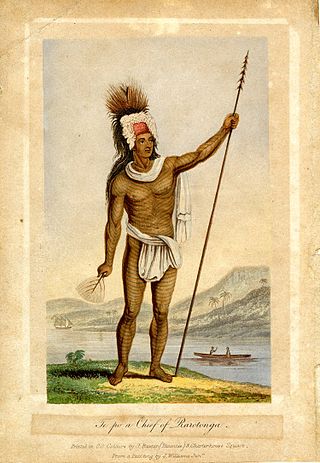
The Cook Islands are named after Captain James Cook, who visited the islands in 1773 and 1777, although Spanish navigator Alvaro de Mendaña was the first European to reach the islands in 1595. The Cook Islands became aligned to the United Kingdom in 1890, largely because of the fear of British residents that France might occupy the islands as it already had Tahiti.
Māui or Maui is the great culture hero and trickster in Polynesian mythology. Very rarely was Māui actually worshipped, being less of a deity (Demigod) and more of a folk hero. His origins vary from culture to culture, but many of his main exploits remain relatively similar.
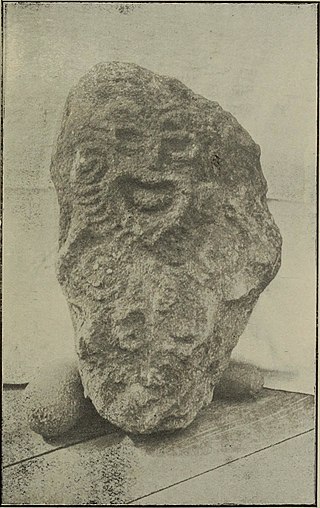
In Māori mythology, Rongo or Rongo-mā-Tāne is a major god (atua) of cultivated plants, especially kumara, a vital crop. Other crops cultivated by Māori in traditional times included taro, yams (uwhi), cordyline (tī), and gourds (hue). Because of their tropical origin, most of these crops were difficult to grow except in the far north of the North Island, hence the importance of Rongo in New Zealand.
In the mythology of Mangaia in the Cook Islands, the Tapairu are elves or fairies, who are named after the four daughters of Miru, the deformed goddess of the underworld. They were said to have been present when mortals danced in honor of their brother, Tau-Titi. They were also associated with the god Tane.

Avaiki is one of the many names by which the peoples of Polynesia refer to their ancestral and spiritual homelands.
Ruatapu was a son of the great chief Uenuku, and a master canoeist in Polynesian tradition who is said to have lived around 30 generations ago. Most Māori stories agree he was an older half-brother of Paikea and 69 other sons, while traditions recorded from the Cook Islands sometimes state he was Uanuku Rakeiora's only son.

Rarotonga is the largest and most populous of the Cook Islands. The island is volcanic, with an area of 67.39 km2 (26.02 sq mi), and is home to almost 75% of the country's population, with 10,898 of a total population of 15,040. The Cook Islands' Parliament buildings and international airport are on Rarotonga. Rarotonga is a very popular tourist destination with many resorts, hotels and motels. The chief town, Avarua, on the north coast, is the capital of the Cook Islands.
In Polynesian mythology, Hawaiki is the original home of the Polynesians, before dispersal across Polynesia. It also features as the underworld in many Māori stories.
Alistair Te Ariki Campbell ONZM was a poet, playwright, and novelist. Born in the Cook Islands, he was the son of a Cook Island Māori mother and a Pākehā father, who both died when he was young, leading to him growing up in a New Zealand orphanage. He became a prolific poet and writer, with a lyrical and romantic style tempered by a darkness borne out of his difficult childhood and struggles with mental health as a young adult. Although he wrote about Māori culture from his earliest works, after a revelatory return to the Cook Islands in 1976, his later works increasingly featured Pasifika culture and themes. He received a number of notable awards during his lifetime including the New Zealand Book Award for Poetry and Prime Minister's Award for Literary Achievement, and is considered one of New Zealand's foremost poets as well as a pioneer of Pasifika literature written in English.
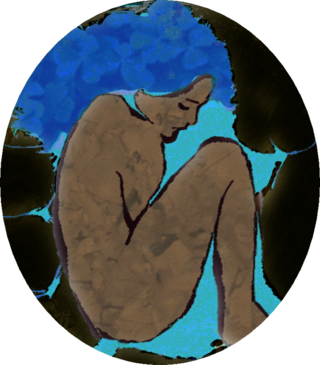
In Cook Islands mythology, Varima-te-takere also called Vari, was the primordial mother of the gods and mortals.
In Māori mythology, as in other Polynesian traditions, Māui is a culture hero and a trickster, famous for his exploits and cleverness. He possessed superhuman strength, and was capable of shapeshifting into animals such as birds and worms.
Uenuku is an atua of rainbows and a prominent ancestor in Māori tradition. Māori believed that the rainbow's appearance represented an omen, and one kind of yearly offering made to him was that of the young leaves of the first planted kūmara crop. He was a tribal war god invoked before battles, particularly in the northern half of the country. It was said that if a taua appeared under the arch of the rainbow, it would be defeated in battle, and likewise, if they appeared to either side of the rainbow, they would be victorious. The Māori identified hawk feathers and a particular star called Uenuku as being sacred to him.

Easter Island was traditionally ruled by a monarchy, with a king as its leader.
In Māori tradition, Te Paepae-ki-Rarotonga was one of the great ocean-going, voyaging canoes that was used in the migrations that settled New Zealand. Te Paepae-ki-Rarotonga was captained by Waitaha-ariki-kore and is said to have landed near Matatā.
An ariki, ꞌariki, aliki, ali‘i, ari'i, Rotuma) aiki or hakaiki, akariki or ‘eiki (Tonga) is or was a member of a hereditary chiefly or noble rank in Polynesia.

ʻOro is a god in Tahiti and Society Islands mythology. The veneration of ʻOro, although practiced in varying intensity among the islands, was a major religion of the Society Islands in the 17th and 18th centuries, especially Tahiti, Tahaa, Moorea, and Raiatea. On Tahiti, ʻOro was the main deity and the god of war. The secret society of Arioi was closely linked because of its rites. On the Marquesas Islands, ʻOro bore the name Mahui.
Written Cook Islands literature has in some ways been a precursor to the development of Pacific Islands literature. Cook Islander Florence Frisbie was one of the Pacific Islands' first writers, publishing her autobiographical story Miss Ulysses of Puka Puka in 1948. Tongareva poet Alistair Te Ariki Campbell published his first collection, Mine Eyes Dazzle, in 1950. In 1960, Cook Islanders Tom Davis and Lydia Davis published Makutu, "perhaps the first novel by South Pacific Island writers".
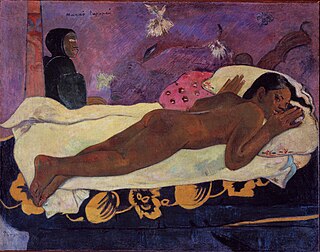
There was widespread belief in ghosts in Polynesian culture, some of which persists today. After death, a person's ghost would normally travel to the sky world or the underworld, but some could stay on earth. In many Polynesian legends, ghosts were often involved in the affairs of the living. Ghosts might also cause sickness or even invade the body of ordinary people, to be driven out through strong medicines.
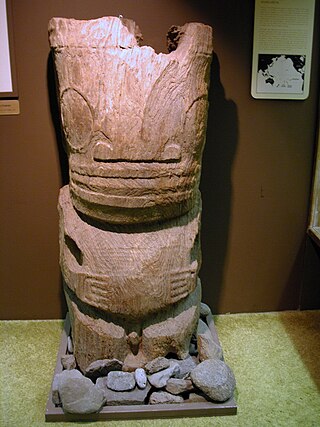
Mangarevan narrative comprises the legends, historical tales, and sayings of the ancient Mangarevan people. It is considered a variant of a more general Polynesian narrative, developing its own unique character for several centuries before the 1830s. The religion was officially suppressed in the 19th century, and ultimately abandoned by the natives in favor of Roman Catholicism. The Mangarevan term for god was Etua.

Cook Islands mythology comprises historical myths, legends, and folklore passed down by the ancient Cook Islanders over many generations. Many of the Cook Islands legends were recited through ancient songs and chants. The Cook Islands myths and legends have similarities to general Polynesian mythology, which developed over the centuries into its own unique character.
References
- ↑ William Wyatt Gill (1876). Myths and Songs from the South Pacific. London: H. S. King & Company. pp. 172–174.
- ↑ Suzanne Nola (2005). "'A Journey from Despair': Alistair Te Ariki Campbell's The Dark Lord of Savaiki". ProQuest.
- ↑ Robert D. Craig. Dictionary of Polynesian Mythology. p. 171.